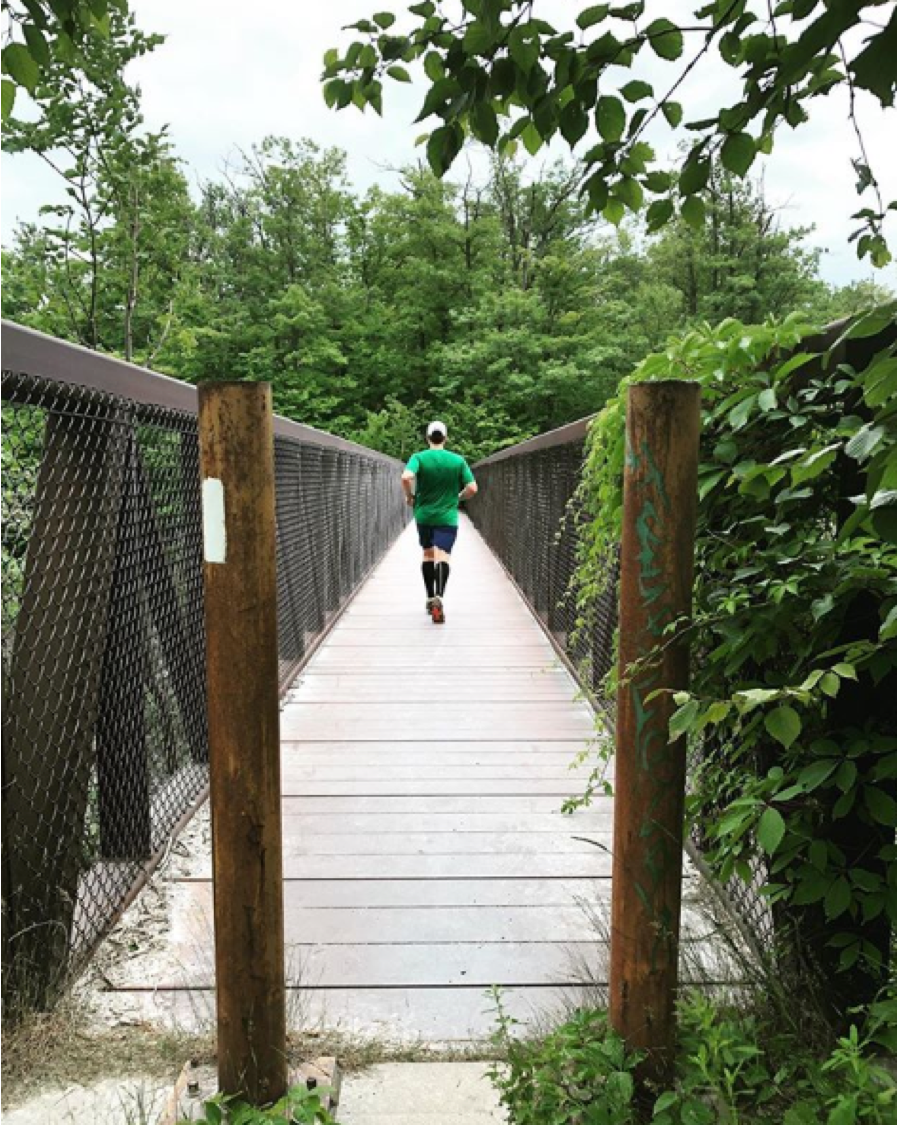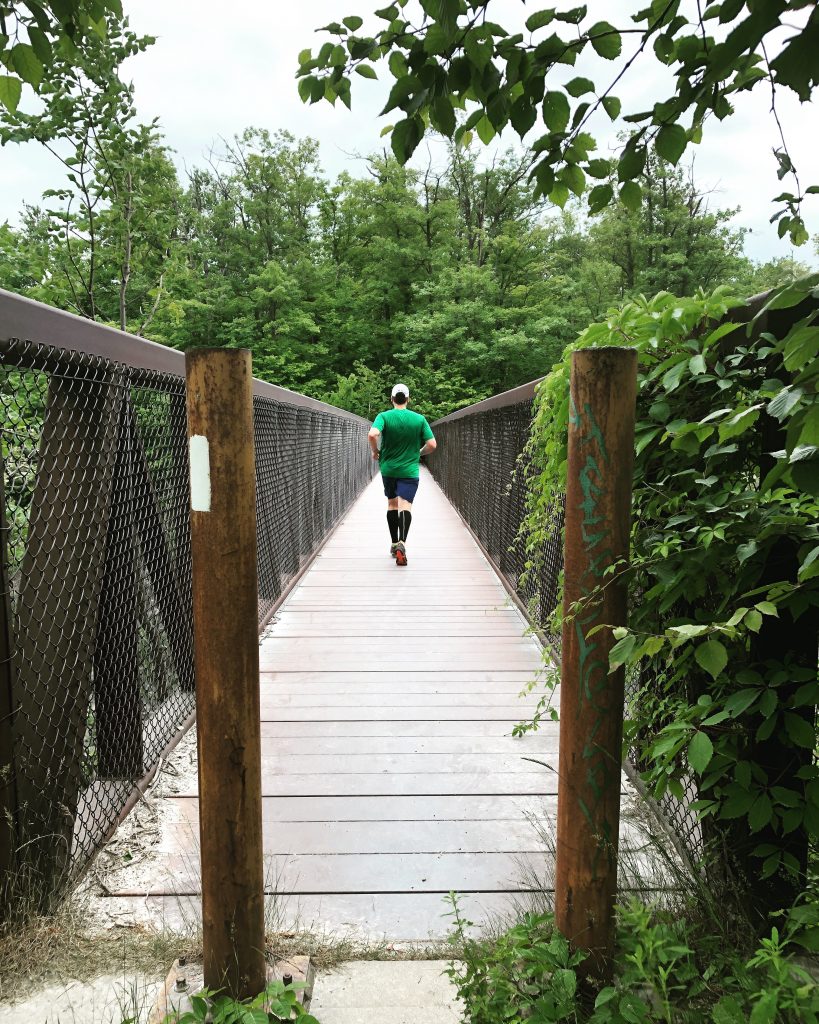I am often asked how I make time for my three small kids, my wife and my job while training for ultra-marathons. There is no doubt that training for 100 mile races is a big undertaking. You are preparing to run all day and all night and the race can be a very painful experience if you are not prepared. That being said, ultra-marathons are painful no matter what, but you don’t want to suffer more than you need to. Training for ultra-marathons demands a big time commitment but I have found that there is enough time to train if you are strategic with your time and make a good plan.
The plans that I discuss are applicable to runners who can already run 10km comfortably. This does not mean that you can run a 10km race comfortably. 10km races always hurt regardless of your experience level. I am referring to running a 10km training run at a comfortable pace. If you are interested in running ultra-marathons but have not built up the endurance to run 10km, I would suggest starting with a plan that gets you there. Once you are running 10km comfortably, you can start training for the longer distances. I would definitely recommend a progression for your distances. My progression was: 10km, marathon (42.2km), 50km, 50 mile (80km) and 100 mile (160km).
Overview
I make a three to four month training plan for my ultra-marathons. I steadily increase the length of time that I run by around 10% every week until race weekend. A 10% increase is a good rule of thumb to avoid injury and I have had good experience with this rule. I’ve included my 2019 training plan for the Quebec Mega Trail 110km race below.

Work week work outs:
I work out four times during the work week and twice on the weekend. During the work week, I do one hour work outs early in the morning or at lunch time. I am currently taking Monday off, doing one hour runs on Tuesday and Thursday, doing a 30 minute run and 30 minutes of weights on Wednesday and swimming for 45 minutes on Friday. I don’t have a distance or pace goal during these runs. I run at a comfortable pace for the amount of time that I have. Running for distance can be discouraging. There are many days when you are not feeling very well but you still have to go for your run. It is much easier to run at a slower pace for two hours and feel okay afterwards as opposed to feeling like crap from running hard.

Weight work outs:
I am doing squats, deadlifts and core exercises for weight work outs. Weights are very important for joint health and for running hills. I have recently started to lift weights regularly and have seen a huge difference in my running. I can power up and down hills more easily and I am experiencing very few injuries or strains. In addition to these weight workouts, I have started doing fifteen to twenty minutes of weights first thing in the morning. This includes any combination of push-ups, pull-ups, planks, air squats, bicep curls and tricep dips. Small workouts first thing in the morning are a great way to give yourself a boost of energy in the morning. I got this idea from the 5am Club book by Robin Sharma, one of my favourite authors.
Weekend work outs:
I do my long runs exclusively on the weekend when it is easier to take more time off from work. Long runs are the key to ultra training. You can miss most of your workouts during the week but still maintain your training if you complete your long runs. I train differently on Saturday and Sunday. I like to sleep in on Saturday and then do a 1 – 1.5 hour run later in the day. If you have small kids, it is great to bring them with you on these runs. We bought a two person running stroller over seven years ago and it is one of the best investments that we have ever made. My wife is always okay with me leaving the house for a run if I am bringing two or more of the kids with me. On Sundays, I will wake up early for my long runs of 2 hours or more. I am usually out the door at 6am because I want to be sure that I am around during the day to spend time with my family.
I change my training plan and start doing back to back long runs on the weekend when it is one month out from the race. I will wake up early on Saturday in addition to waking up early on Sunday for a long run. Back to back long runs give you the benefit of running on tired legs without having to be out all day. I don’t like training runs that keep you out for more than 4-5 hours. Training runs that are longer than 4 hours can put you at a higher risk for injury and who has time for that! I schedule a taper period for two weeks prior to my race in which I only run 1 – 2 hours on Saturday and Sunday. This ensures that I have ample time to recover and to be in top shape for the race.
Rest Weeks:
I will do a lighter training week every two weeks to give my body time to recover. During these rest weeks, I will do my regular runs during the work week but I will shorten my weekend runs to 1 – 1.5 hours long.
Terrain:
You should try to do most of your training runs on terrain similar to the terrain that you will be racing on. If you are going to be racing on hilly and muddy trails, you should train on hilly and muddy trails. I had a very tough time at the Quebec Mega Trail 110km because the terrain was very technical with a lot of mud, roots and rocks. I had done the right amount of training but I trained on terrain that was much less technical.
Hiking:
It is also a very good idea to plan hiking into your training since you spend a lot of time hiking during ultra-marathons. I hike up all of the hills during races. There are always times when I need to hike for twenty minutes or longer so that I can rest or if I need to cover technical terrain that is too hard to run. The month before I ran the Midnight Moose 100 miler, I did half of my long runs as hiking and the other half as running. This worked out really well and I ended up placing second overall in the Midnight Moose.
Training races:
I highly recommend planning a race into your training as a great way to stay motivated. I ran the Sulphur Springs 50km race this year in Waterdown, Ontario one month before the Quebec Mega Trail, 110km. It took me 5h28m to run the 50km which is an amount of time that fit well into my training plan. I felt great during the race and placed a solid 15th out of 184 runners. This was a great confidence booster and kept me motivated to complete my training for the Quebec Mega Trail.
Conclusion:
Mike Tyson once said that everyone has a plan until you get punched in the mouth. I am not a Mike Tyson fan but there is a lot of truth in this statement. There is a lot of pressure to carry out 100% of your training plan but the reality is that even world-class athletes have a hard time doing all of their workouts. Life happens and there are always unforeseen events that can throw off your training. As previously mentioned, I have had success by prioritizing my long runs on the weekend even if I have not been able to work out most of the week. What’s more, there are always going to be days when you are feeling sick or you have developed an injury or a strain. It is absolutely okay to modify your training plan so that you are doing lighter workouts during these times. You can pick up your training once you are feeling better and there is a very good chance that you will still accomplish your goals. Don’t hesitate to reach out on Instagram @jordanwickett for any questions – I would love to hear from you.










